6.16. Tait Radio Trunked P25 ISSI¶
6.16.1. Tait Radio Trunked P25 ISSI Introduction¶
The purpose of this document is to describe the steps to ensure a successful integration between an Eventide NexLog740 or NexLog840 and Tait Radio P25 Trunked system using ISSI (Inter RF Subsystem Interface). The document assumes knowledge of the NexLog front panel interface and the browser based configuration manager and does not discuss recording interfaces beyond the Tait Radio integration. It also assumes familiarity with configuring the Tait system. For more details on these interfaces, please refer to their respective manuals.
6.16.2. RFSS Configuration Detail¶
RFSS Voice Recorder Licensing
Using the TN9400 RFSS Manager (Configure->RFSS) ensure that both RFSS Controller A and B are licensed for voice recording, i.e. TNAS506 is non-zero, the number referring to the permitted number of voice recorder connections.

Fig. 6.132 Voice Recorder Licensing¶
Add the Nexlog as an external RFSS
Using the TN9400 RFSS Manager, accessed by selecting ‘RFSS Manager’ on the Tait Controller home page, add Nexlog as an External RFSS (Configure->External RFSSs).
The following figure has the fields populated for illustrative purposes; the actual values in each installation will most likely be different. Verify each value with the Tait Radio ST or the Customer Network Administrator.
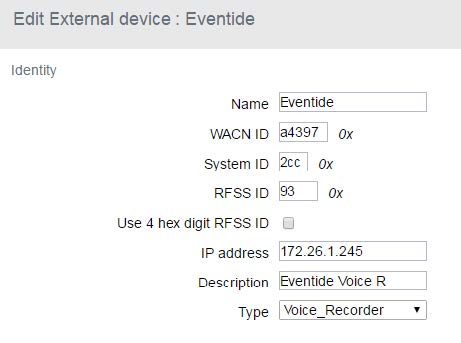
Fig. 6.133 Voice Recorder Licensing¶
Field Details
Name: text string to identify the device
WACN ID: WACN ID of the Nexlog, must match that of the RFSS
System ID: System ID of the Nexlog, must match that of the RFSS
RFSS ID: RFSS ID of the NexLog
Use 4 hex digit RFSS ID: Leave unchecked as RFSS ID of Nexlog cannot be greater than 255
IP Address: Enter the IP address of the Nexlog
Description: User friendly description of the Nexlog
Type: Set to Voice_Recorder
6.16.2.1. Push the configuration to both RFSS controllers¶
Log in to the RFSS command line using a secure shell tool such as putty. Execute the command RmCli send_all to push the new configuration to both controllers. Enter the Nexlog in the Locations table
Using the TN9400 Fleet Manager, accessed by selecting ‘Fleet Manager’ on the Tait Controller home page, enter Nexlog into the locations table. The following figure has the fields populated for illustrative purposes; the actual values in each installation will most likely be different. Verify each value with the Tait Radio ST or the Customer Network Administrator.

Fig. 6.134 Voice Recorder Licensing¶
Field Details
Location ID: Hexadecimal quadruplet used to identify the NexLog Recorder (in the format rfss-id (of recorder).system-id.wacn-id.p25dr)
Location Alias: text string to identify the device
Location Type: ‘Voice_Recorder’
Vocoder Mode: Set to ‘Full Rate/Half Rate’ to record calls in both phase 1 and phase 2
6.16.2.2. NexLog Configuration Overview¶
Each of the follow steps will be explained or shown with screen shots: - Confirm NexLog version and licensing - Upload Tait P25 Talk Groups - Add a virtual recording interface board - Select the number of IP channels/number of talk paths - Select the Tait Radio Trunked P25 ISSI Recording Template - Fill in the required fields - Apply the template - Select the talk groups of interest (i.e. to be recorded) and Reapply the Template - Verify recording
Note
Where data entry is required, the “Typical Source” to ascertain the data from is noted.
6.16.3. NexLog Tait Radio P25 Configuration Detail¶
6.16.3.1. NexLog Licensing¶
Ensure that the NexLog is licensed appropriately for VOIP/RTP VoIP Channels, P25 decryption (if Crypto is being used), OTAR functionality (if OTAR being used) and Tait Radio P25 ISSI Integration. If proper licenses are not present contact Eventide technical support before proceeding.
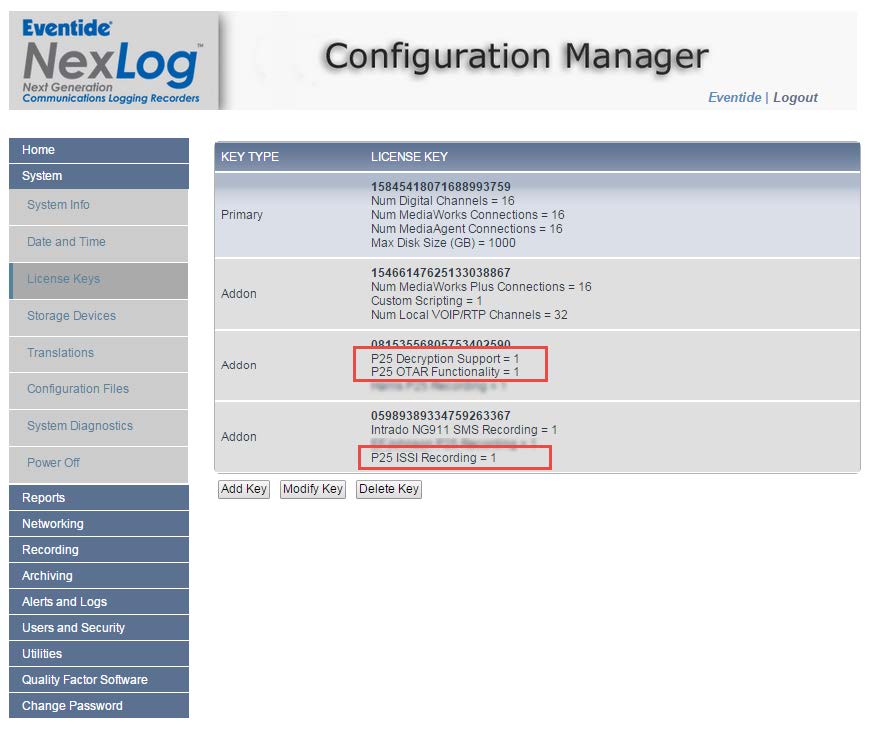
Fig. 6.135 Voice Recorder Licensing¶
Upload Tait P25 Talk Groups
The Tait P25 Talk Group configuration file is found on the ‘System>>Configuration Files’ Page (Shown below). Select “Tait P25 Groups List”
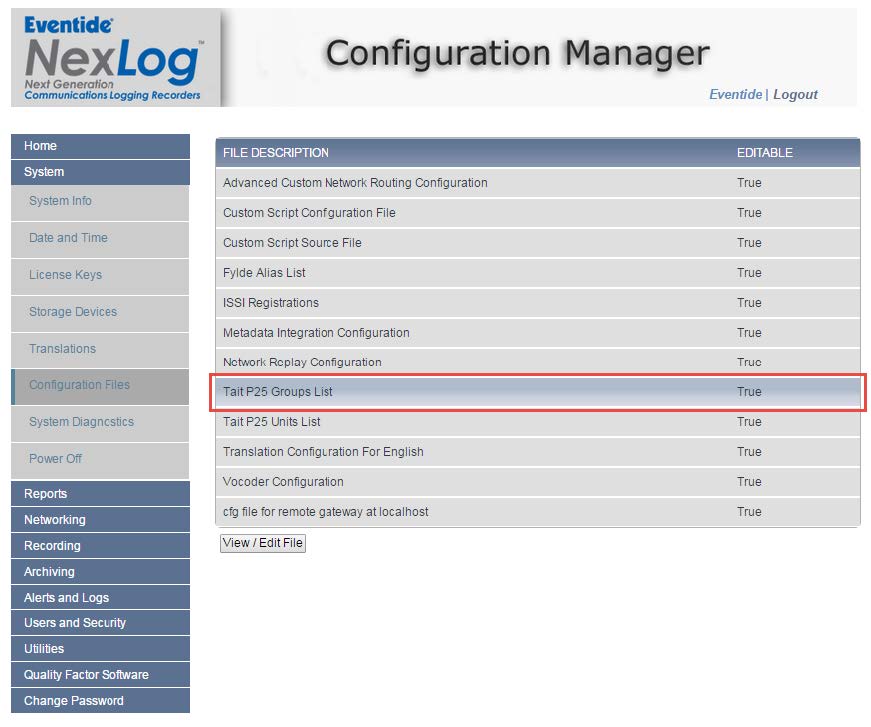
Fig. 6.136 Voice Recorder Licensing¶
It is recommended that the P25 Talk Groups be initially uploaded from a file provided by the Tait ST, using the menu shown below. The uploaded file contents will be shown on the page below. While it is not recommended, the contents can be updated directly on the web page.

Fig. 6.137 Voice Recorder Licensing¶
Upload Tait P25 Units List (Optional)
The Tait P25 Units List file is found on the ‘System>>Configuration Files’ Page (Shown below).
Select “Tait P25 Units List”. This is an optional step, however, uploading this file will enable useful name tagging of radio units that are being recorded.

Fig. 6.138 Voice Recorder Licensing¶
It is recommended that the P25 Unit List be initially uploaded from a file provided by the Tait ST, using the menu shown below. The uploaded file contents will be shown on the page below. While it is not recommended, the contents can be updated directly on the web page.
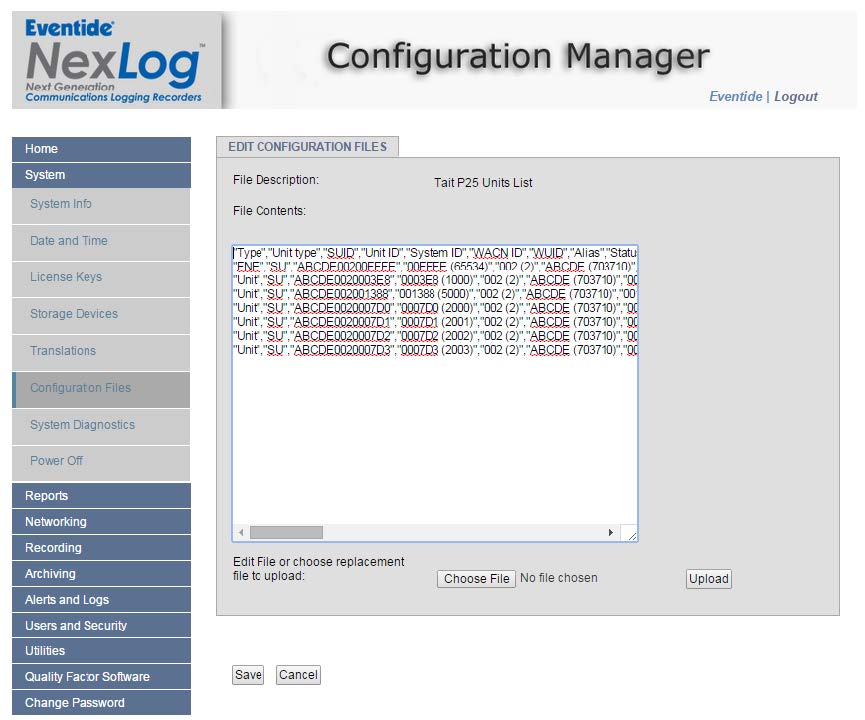
Fig. 6.139 Voice Recorder Licensing¶
Add Virtual Recording Interface

Fig. 6.140 Voice Recorder Licensing¶
Select the number of IP channels/number of talk paths
Note, this is the maximum number of talk paths between the NexLog and Tait Radio that can be recorded. Not to be confused with “Talk Groups”, multiple Talk Groups can be on one “Talk Path”.
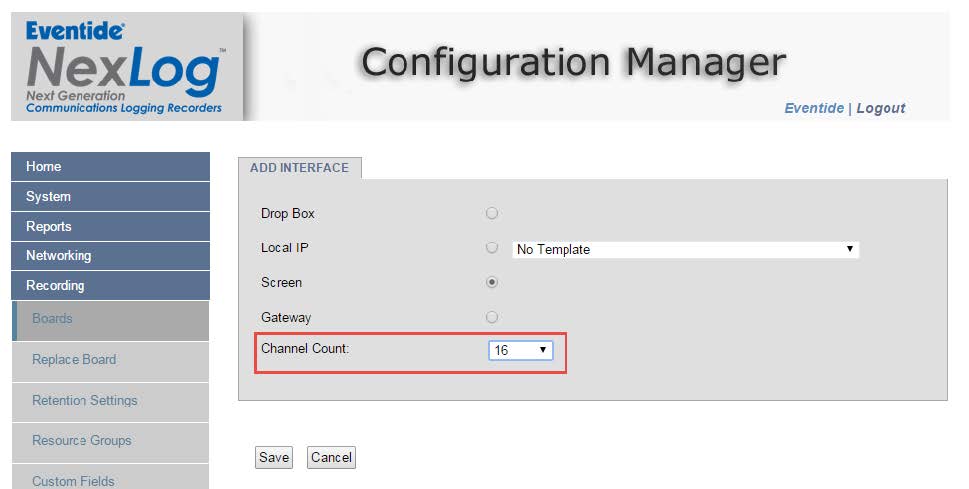
Fig. 6.141 Voice Recorder Licensing¶
Select the “Tait Radio Trunked P25 ISSI” Template

Fig. 6.142 Voice Recorder Licensing¶
Fill in the Tait Radio Trunked P25 ISSI Template Fields:
The following figure has the fields populated for illustrative purposes, the actual values in each installation will most likely be different. Verify each value with the Tait Radio ST or the Customer Network Administrator.
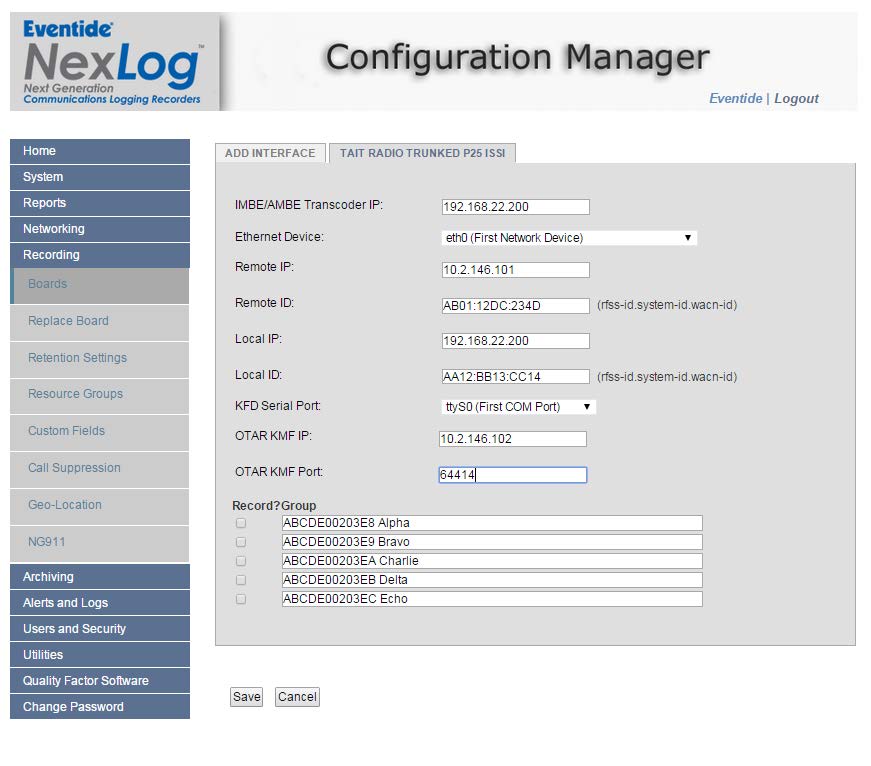
Fig. 6.143 Voice Recorder Licensing¶
Template Field Detail
Ethernet Device: Select the physical Ethernet/NIC of the NexLog recorder which is connected the Tait Radio LAN switch
Remote IP: Virtual IP address of the Tait Radio IP device that will send audio and metadata to the recorder (RFSS)
Remote ID: Hexadecimal triplet used to identify the Tait Radio IP device that will send audio and metadata to the recorder (RFSS (in the format rfss-id.system-id.wacn-id))
Local IP: IP address of the NexLog Recorder
Local ID: Hexadecimal triplet used to identify the NexLog Recorder. (in the format rfss-id (of recorder).system-id.wacn-id)
KFD Serial Port: Physical serial port on the back of the NexLog recorder that the Key Fill Device (KFD) will connect to (when applicable)
OTAR KMF IP: IP address of the Key Manager Facility (KMF) which manages Over The Air Rekeying (OTAR), leave blank if OTAR will not be used
OTAR KMF Port: UDP port over which the Key Manager Facility (KMF) will communicate to the recorder (Default port for Tait KMF is 64414), leave blank if OTAR will not be used
Talk Groups to record: Select the talk groups to be recorded. These were uploaded to the recorder in a prior step
6.16.3.2. Apply the template¶
After filling in all the fields, select Save. The NexLog will now attempt to save the template data and initialize for recording.
6.16.3.3. Configure IMBE/AMBE Transcoder IP(s)¶
License Required
DVSI will require a “Num Internal Vocoder Resources” add-on license key. Contact your Eventide Communications Dealer for assistance.
P25 Systems utilize IMBE/AMBE low bit rate encoding for recording. As a result, it is required to have at least one IMBE/AMBE vocoder (DVSI) resource available, which is used for playback of IMBE/AMBE encoded files.
There can be one or more IMBE/AMBE vocoders in the environment, each one’s unique IP address or internal status needs to be entered on the IMBE/AMBE configuration page. (Shown below).

Fig. 6.144 Voice Recorder Licensing¶
Note
There is the possibility to have external or internal IMBE/AMBE vocoders. This example is using an external vocoder. Background batch decoding is not required and outside the scope of this document, please refer to the NexLog Recorder User Manual for further details.
6.16.3.4. Check for Alerts¶
Check the NexLog front panel and/or configuration manager (figure below) for any system alerts or Tait Radio specific alerts. There will be alerts specific to the Tait Radio integration if there are problems with downloading talk groups, managing crypto keys and OTAR.

Fig. 6.145 Voice Recorder Licensing¶
6.16.3.5. Verify Recording¶
Place a series of test calls between radios on both encrypted and unencrypted talk groups. Use MediaWorks DX or the front panel display to verify recording of all test calls.